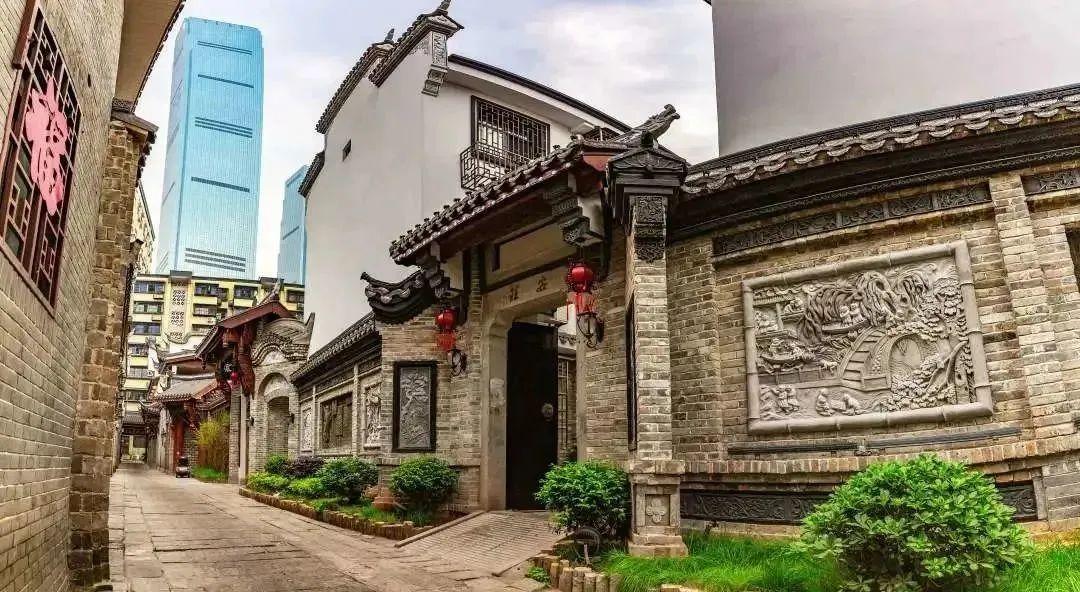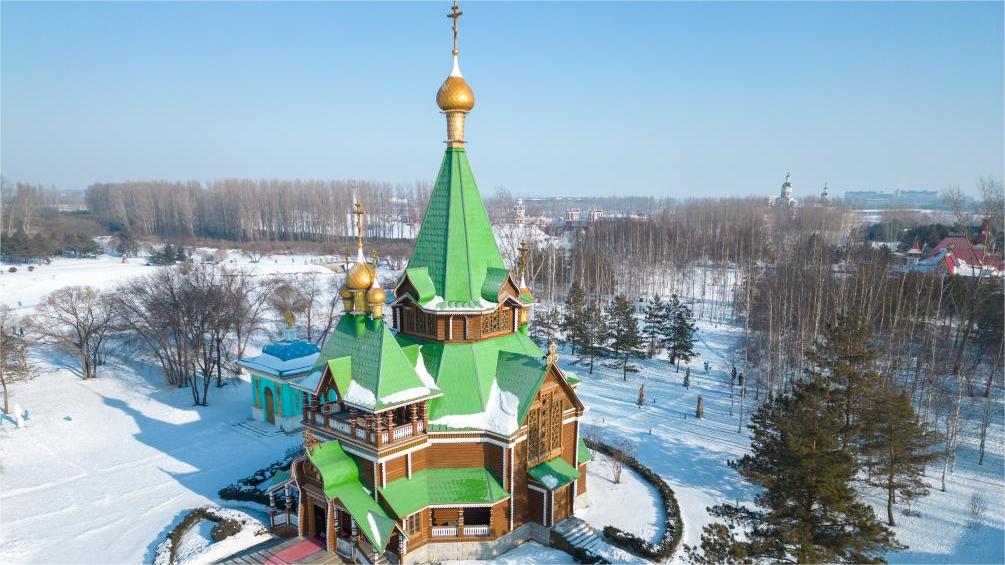Old alleys in Changsha, C China's Hunan captivate visitors with cultural charm
By tapping into its cultural and artistic resources, Furong district of Changsha city, capital of central China's Hunan Province, has revitalized its old alleys and at the same time greatly enriched citizens' lives.
Alley turned into new cultural landmark featuring traditional Chinese opera
A 300-meter-long alley that threads through three provincial-level art institutions established over 70 years ago - the Peking Opera Protection and Inheritance Center of Hunan, Hunan Gordon Theatre, and Hunan Flower-drum Opera Theatre - has been transformed into a popular street brimming with traditional Chinese opera elements.
The transformation began in April 2022 and was completed in November 2023. The transformation project adopted a “micro-renovation” approach, and was implemented together with the renovation of old urban residential communities.
The old alley, now referred to as Theater Street, was repaved with smooth asphalt and the exterior walls of the art institutions have been decorated with stage photos of traditional Chinese opera classics, immersing pedestrians in the world of opera.
Related elements have even been added to the side pavements of nearby trunk roads, with bricks and stone blocks nicely embellished with facial masks and other icons of traditional Chinese opera.
“Walking along Theater Street makes people want to watch traditional Chinese opera performances,” said Chen Xinyan, a fifth grader from a local elementary school, after watching performances and learning some traditional Chinese opera moves on stage from professional actors.
“Details like lifting the foot, striding, turning, swinging sleeves, and looking back can express a role’s emotions. It’s very interesting,” she said.
The street has become a new cultural landmark of Changsha, putting the spotlight on the once obscure art institutions tucked away in old alleys while bringing traditional culture into residents’ lives.
“Even fragrant wine fears the obscurity of the deep alleys. We hope to forge closer connections with audiences through diverse forms,” said Ge Qianqian, deputy director and national first-class performer of the Peking Opera Protection and Inheritance Center of Hunan.
The center has set up an intangible cultural heritage experience center of traditional Chinese opera, according to Ge, who added that the Peking Opera Protection and Inheritance Center of Hunan will actively hold a diverse range of activities to spread knowledge of intangible cultural heritage related to traditional Chinese opera.
“We transformed this street to attract more people to this place, so that the best of traditional Chinese culture can take root in the hearts of more people, especially teenagers,” said Li Qijie, executive deputy head of the publicity department of the Communist Party of China (CPC) Furong district committee.
Antique flavor fosters new business forms in old alley
The Baiguoyuan historical and cultural tourism block in Dingwangtai subdistrict, Furong district is dotted with cultural relics and historical sites, including ancient drainage ditches, and holds great appeal to citizens and entrepreneurs, thanks to the local government's efforts to improve people's living environment while preserving historical memories.
In July 2018, the Furong district government launched a project to renovate and transform the block, which used to be an old alley hidden away in a bustling business district. The project restored more than 10 historical sites, upgraded infrastructure facilities, and renovated the dwellings of 1,937 households, significantly improving the living conditions of local residents.

Photo shows an alley in the Baiguoyuan historical and cultural tourism block in Furong district, Changsha. (Photo/convergence media center of Furong district)
“After the renovation of Baiguoyuan, not only do young tourists like to visit here, but we old residents also enjoy the lively atmosphere,” said Zhang Man, a woman who has lived here for decades but seldom visited the block until the renewal project.
The cultural and historical ambience of the block has attracted many young entrepreneurs, who have injected new vigor into the alley by opening coffee shops, restaurants, clothes shops, and shops selling products featuring folk customs.
"This place has an antique flavor. It's so quiet that time seems to have stopped here," said Long Sheng, an entrepreneur who has opened several shops in the block.
“Changsha’s cultural heritage resides in its old streets and alleys. Each old street and alley is filled with stories,” said Yi Liping, head of the culture, tourism and sports bureau of Furong district.
Furong District is committed to telling the stories of old neighborhoods to more people to bring their attention to these long-standing historical and cultural blocks, so that cultural tourism and cultural and creative industries will be able to inject more vitality into economic development, according to Yi.
Art gallery, cultural center and library bring art into citizens' everyday lives
In an effort to enrich citizens' everyday lives with art, Furong district introduced social capital to establish an art gallery on the banks of the Liuyang River in Changsha.
“We hope the gallery can serve as a bridge linking masterpieces with citizens, bringing art into their lives and making culture a beautiful scene in their everyday lives,” said Zhang Jian, founder of the art gallery.
The new buildings of the cultural center and public library of Furong district are located right across the river. Since being put into service in 2021, the cultural center and library have become important venues for art education.
The new building of the cultural center is equipped with multimedia classrooms, dance classrooms, choir rooms, musical instrument rooms and a 400-seat theater. It offers free training courses on subjects including painting, calligraphy, dance, and music to teenagers.
The new library building houses about 400,000 paper books and 200,000 e-books, and has opened different rooms for books suiting the diverse reading needs of different groups of readers.
“Furong district has many cultural venues. They offer artistic feasts all the year round and make art easily accessible to citizens,” Yi noted.
Photos
Related Stories
- Discovering "new world" in Barcelona
- Year-ender: Top 10 cultural events from 2023
- Museums face up to present-day problems
- International students from BJTU proud to study in China
- China releases first AI large language model for ancient book research
- Trending in China | The ancient art of palm fiber weaving
Copyright © 2024 People's Daily Online. All Rights Reserved.









